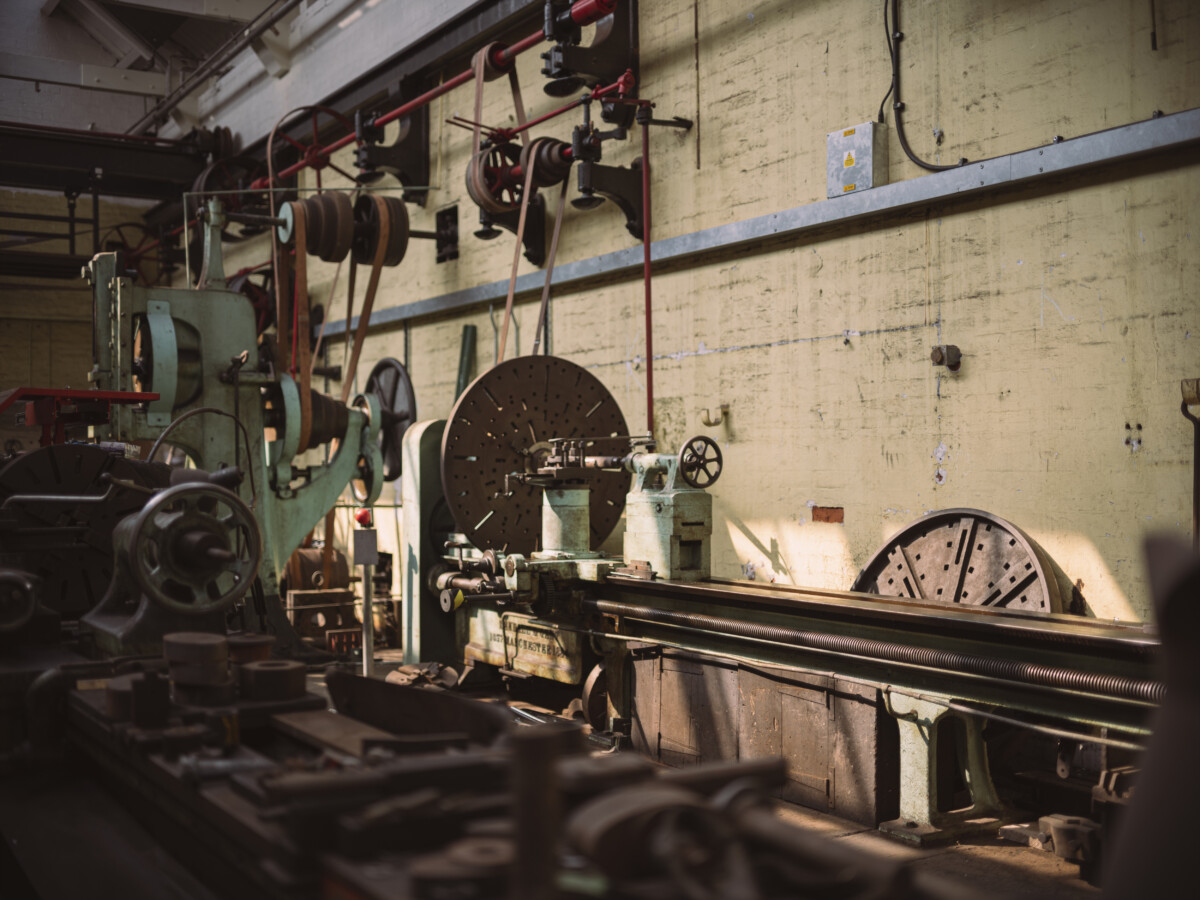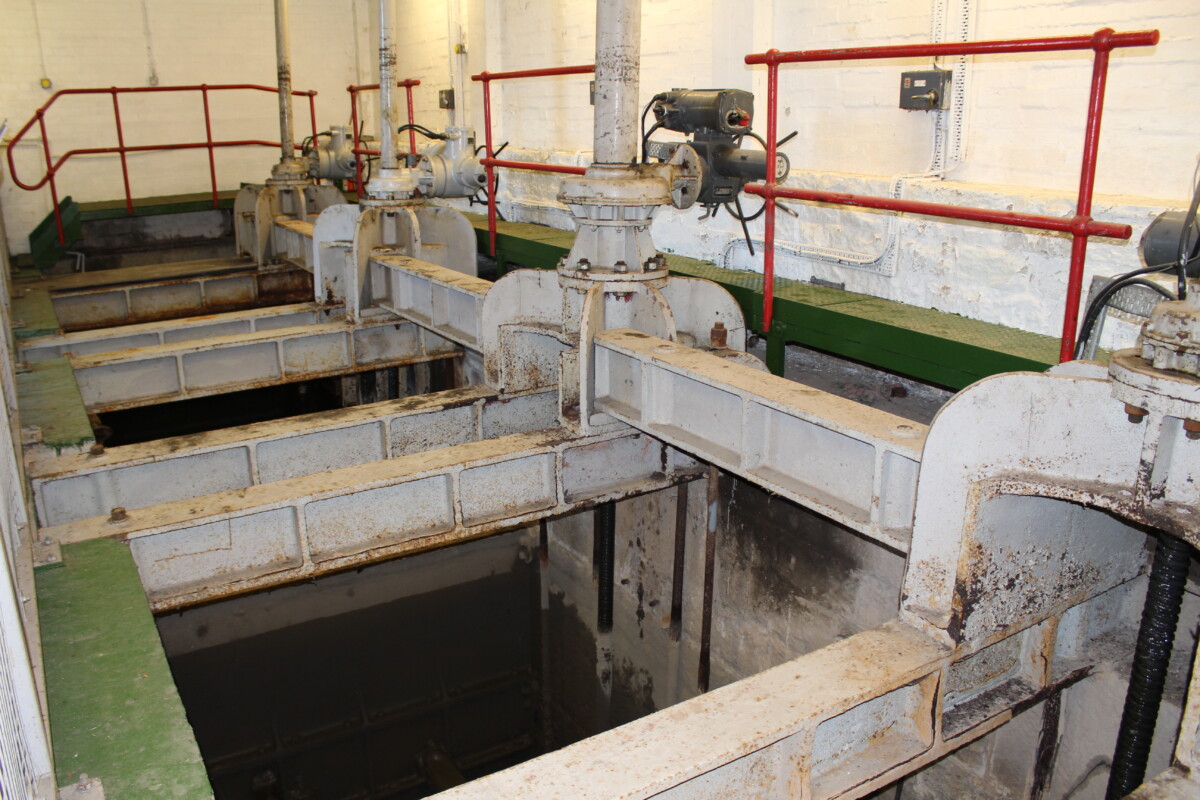Many of the workshops at Underfall Yard, with their striking red brick walls and green doorways, were installed during John Ward Girdlestone’s tenure as Docks Engineer 1882-1890. But who was Girdlestone? Here’s an intriguing profile of him, by volunteer writer Elaine.
John Ward Girdlestone became Bristol Docks Engineer in 1882. He was 42 years old, energetic, and impatient to make improvements. He soon turned his attention to modernising Underfall Yard.
The docks maintenance facilities at the Yard had grown up piecemeal over thirty years. By 1884 they consisted of a collection of “small, dark, inconvenient and tumbledown sheds” housing hand-powered machinery. Girdlestone swept these away and replaced them with a substantial brick-built workshop for fitters and blacksmiths. He bought first-rate machinery and introduced steam power to drive it.

The Docks Maintenance Workshop, installed 1884-1885
Photo by Adam Gasson
He next proposed erecting a new building to replace the “inconvenient, badly lighted and badly ventilated offices and stores” at the Yard. Unfortunately, the cost of this exceeded his estimate. The Docks Committee reprimanded him for overspending without authority. He was ordered to submit all expenditure to the Committee in future, an order which the Committee later noted “has been totally ignored”.
His next major addition to the Yard was the hydraulic engine house, built in 1887 to cope with increased demand for hydraulic power around the harbour. Girdlestone chose the site so as to have it under his personal supervision. He oversaw the laying of the foundations and installed steam pumps to power lock gates, swing bridges and cranes via a network of pipes.
The sluices in the Underfall Dam which controlled the water level in the Floating Harbour often needed repair and could not cope with sudden flooding. Girdlestone replaced them with the system of four culverts and four sluices which is still in use today. This was a huge undertaking, involving the building of a temporary dam across the Floating Harbour to keep the water out. An article in the local paper describing the works predicted that they would “add to Mr Girdlestone’s deservedly high reputation.” Unfortunately, this was not what happened.
The temporary dam meant that the Patent Slipway in the Yard was also accessible and gave Girdlestone the chance to rebuild it. Never one to miss an opportunity, he decided to extend the quay walls at the same time. Once again, he proceeded without the permission of his superiors. The Docks Committee finally lost patience with him. He was charged with failing to report heavy expenditure in excess of his estimates, and with executing works and purchasing plant without authority. The Committee did not question his “savage integrity” but could no longer work with him. After eight years in post, he was forced to resign.

The Underfall Sluices, still in use today to manage the water and silt levels in the Floating Harbour.
His influence is visible in the Underfall Yard today. His workshops are still in use for Docks maintenance work. They still contain some of their Victorian machinery, which Underfall volunteers have restored to working order. Visitors to the yard can now see this machinery in action at the monthly Yard in Action events. The hydraulic engine house is home to the Underfall Yard Visitor Centre and Café. The sturdy red brick exteriors of these buildings set the pattern for later developments, giving the Yard its unique character.
This article was researched and written by volunteer writer Elaine Clark, and reviewed by Underfall Yard Trust. For further information on the sources for this article, please get in touch at info@underfallyard.co.uk.
The Recovery and Reinstatement Project is now underway after the fire in May 2023. Click here to read more and find out how to support the project…

